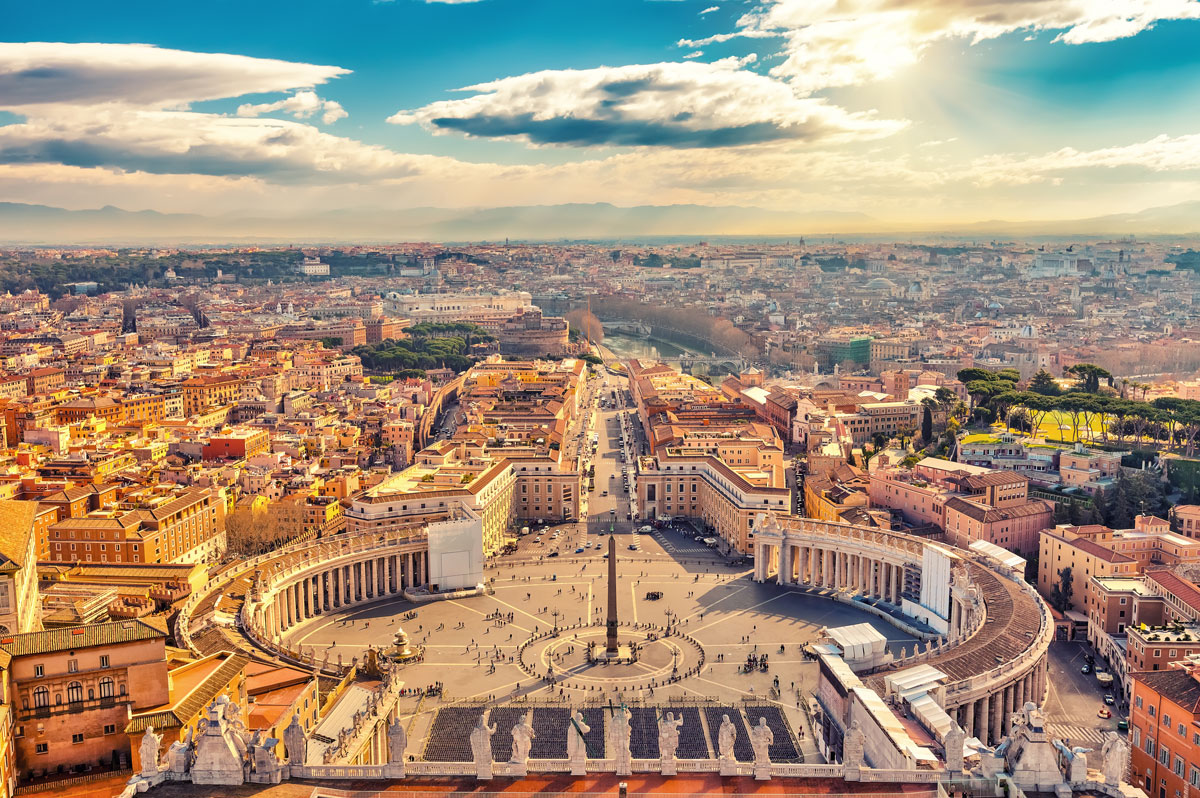Rome, that ancient city which was once the centre of a formidable empire, is still just as fascinating as ever. And now that it’s been voted one of the world’s top travel destinations, there’s never been a better time to visit as part of your Europe Coach Tour or one of our Italy Regional Tours! Read on for our Expat Explore Guide to Rome!

The origins of Rome are the stuff of legend. Supposedly founded by Romulus and Remus, two brothers who were raised by a she-wolf, the city’s history stretches far back into the mists of time. Its legacy as the caput mundi (capital of the world) made it a focal point for art, culture, politics and power. This is where history was shaped, where heroes were born and where countless thousands met their doom in the Coliseum. Later, it became the city of papal power, ruling all of Christendom from the Vatican.
As well as a political powerhouse, Rome’s artistic heritage is unmatched, with masterpieces by Michelangelo, Caravaggio, Raphael, Bernini and others throughout the city. All through the Renaissance and beyond, Rome was adorned with art, and today these masterpieces remain, turning the city into an open-air art gallery.
Along with the countless artworks and historical sights that you’ll see on your visit to Rome, you’ll be immediately struck by how important good food and wine are in the local culture. Eating and drinking well is still as important as ever, and the pizzerias, restaurants, trattorias and gelaterie are frequented by locals and tourists alike.
Here are some of the top things to do and see in Rome:
The Coliseum

Probably the top of everyone’s list, the Coliseum is a grand reminder of the Roman Empire, and illustrates how important entertainment was to ancient Romans. Completed in 80 AD under the rule of the Emperor Titus, the Coliseum is perhaps the greatest symbol of the Roman Empire left standing today. Although Rome is filled with fascinating statues, official buildings, temples and other archaeological gems that illustrate the reach and power of the Empire, the Coliseum has something different about it. Considering that countless slaves, wild animals, martyrs, gladiators and others met their doom within its walls to the cheers and taunts of the bloodthirsty public, that’s perhaps unsurprising. But hey, that’s entertainment!
The Roman Forum

Although it is now in ruins, the Roman Forum was the epicentre of the city. Comprised of government buildings, temples, shrines, statues, basilicas and public spaces, the Forum was the focus of public Roman life, and the site of triumphal processions, criminal trials, public speeches, and gladiatorial matches. You’ll have to use your imagination to picture how it once looked, but it’s impressive nonetheless.
The Vatican City

The smallest sovereign state in the world, the Vatican is the seat of papal power, and has been for centuries. See the Vatican museums, founded by Pope Julius in the 16th century and enlarged by successive popes. This is where you’ll see one of the world’s greatest art collections, enlarged over the centuries by various popes. St Peter’s Basilica is also a must-see, Italy’s largest, richest and most impressive church, and one of the holiest sites for Catholics. There’s also the Sistine Chapel of course, featuring Michelangelo’s famous ceiling, painted between 1508 and 1512.
The Pantheon

A former temple, dating back some 2000 years, the Pantheon is now a church. Originally, Marcus Agrippa had built a temple here in 27 BC, but it was the Emperor Hadrian who built over it in around 120 AD. Look closely at the pediment though – you can still see the inscription of Agrippa’s name. This is a truly impressive building, which has stood since ancient times. Imagine if these walls could talk!
Palatine Hill

This is where Romulus supposedly founded the city in 753 BC after killing his brother Remus in a fit of anger – and where Rome’s emperors lived their lives in magnificent luxury. Situated between the Forum and the Circo Massimo, most of the hill is covered by the ruins of Emperor Domitian’s imperial palace, which served as the main palace for 300 years, and was built in the 1st century AD.
Trevi Fountain

The largest Baroque Fountain in Rome and one of the world’s most famous, Trevi fountain towers over 26 meters high, and is almost 50 meters wide. Finished in 1762, the fountain remains an icon of Rome. Legend has it that if you throw a coin into the fountain, you’ll return to Rome one day.
There are countless other sights to see in Rome, including the Spanish Steps, Piazza Navona, Villa Borghese and more!
Rome blends the present with the past in a way that few cities could match. Ancient ruins, Renaissance pallazzi and modern designer bars all coexist, making it a thrilling place to visit. Rome is grand, but charming too.
